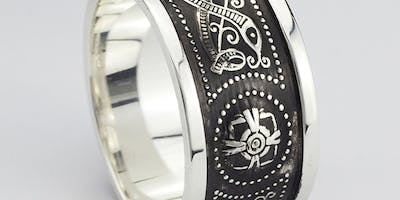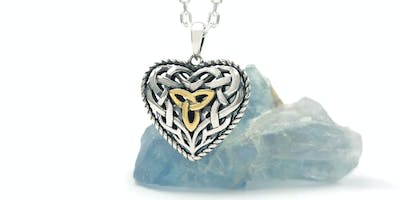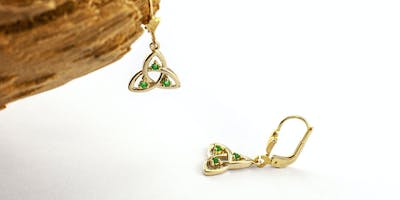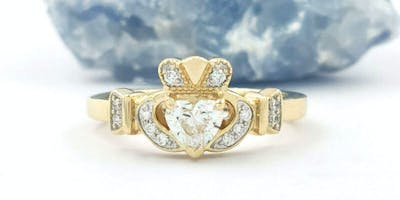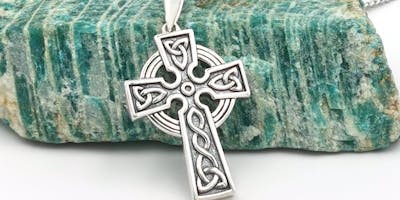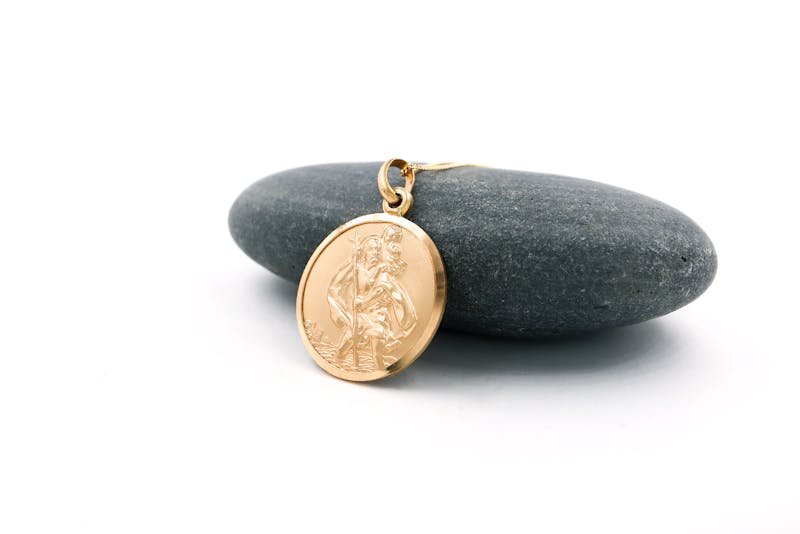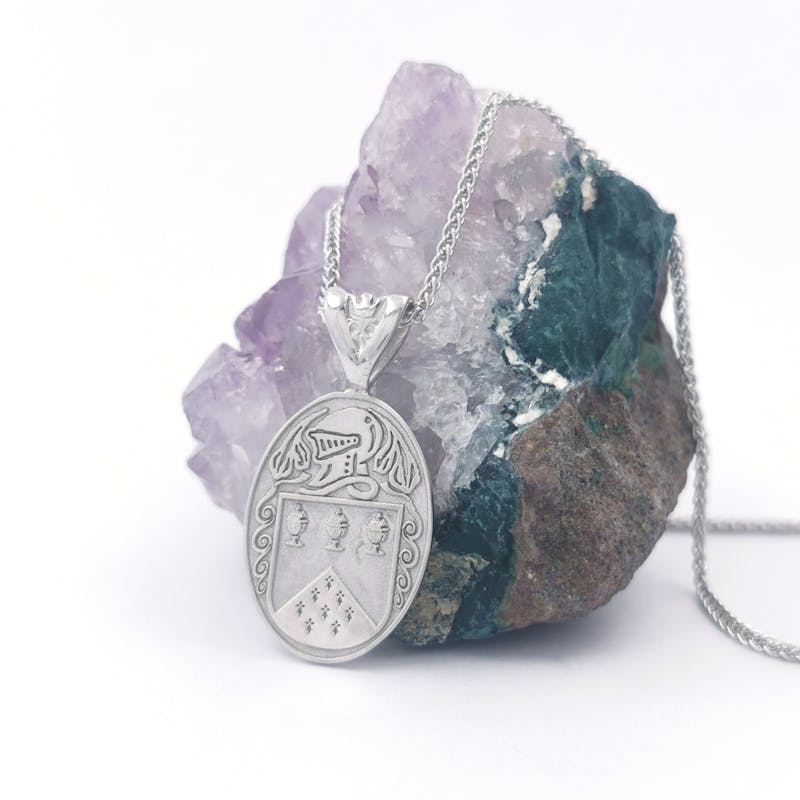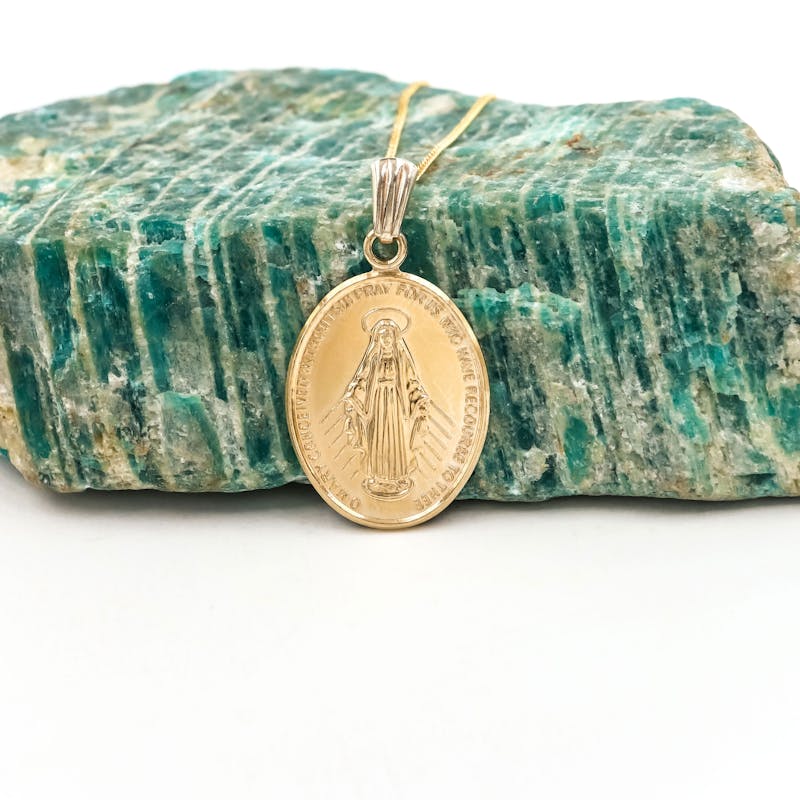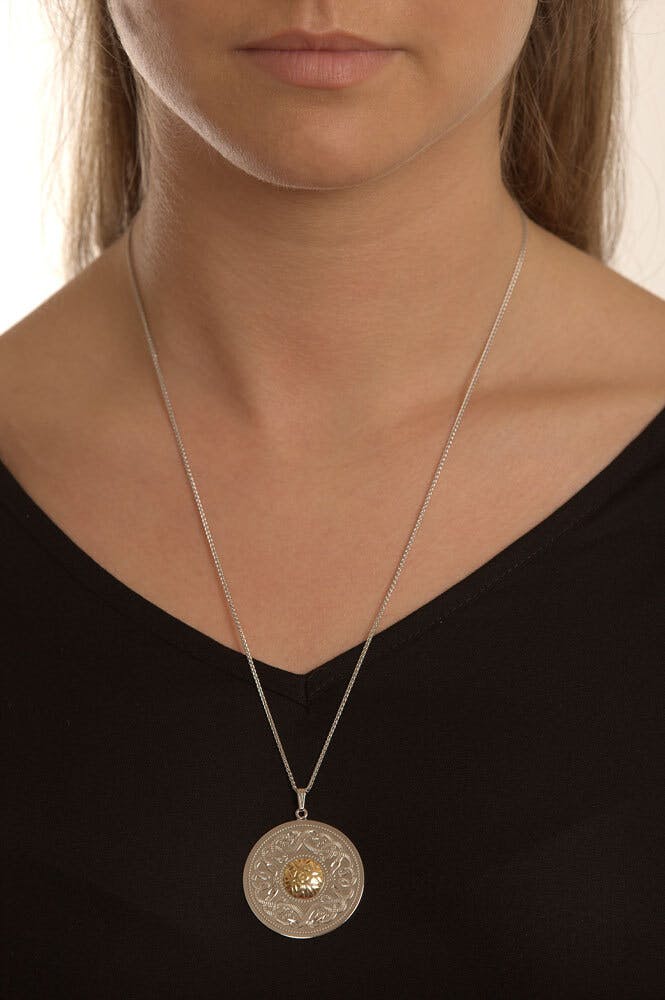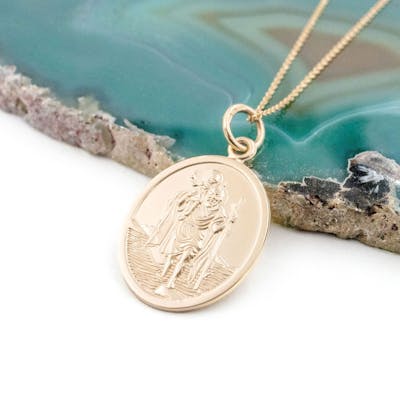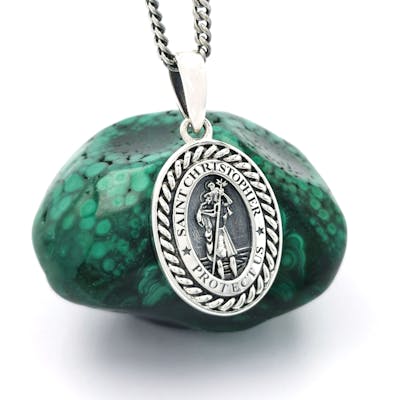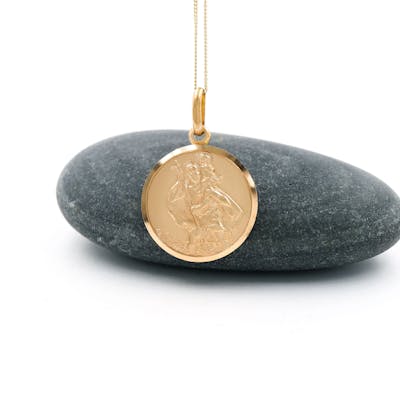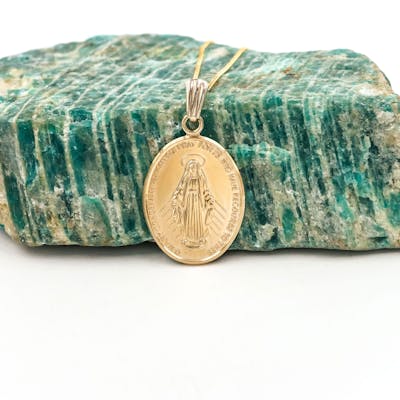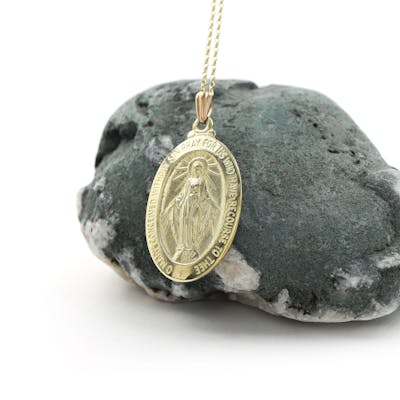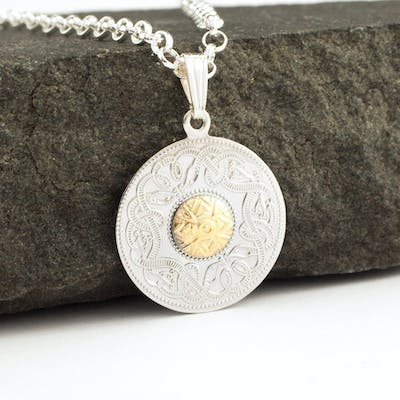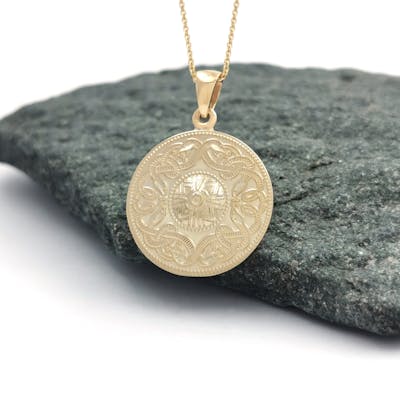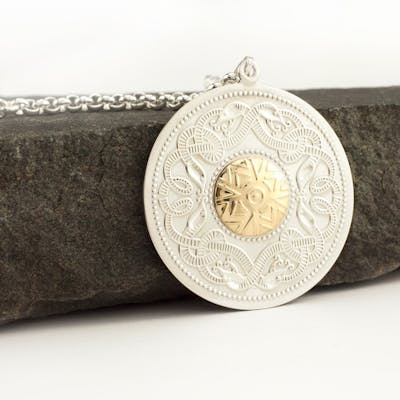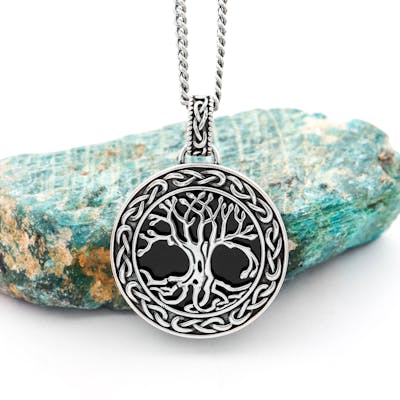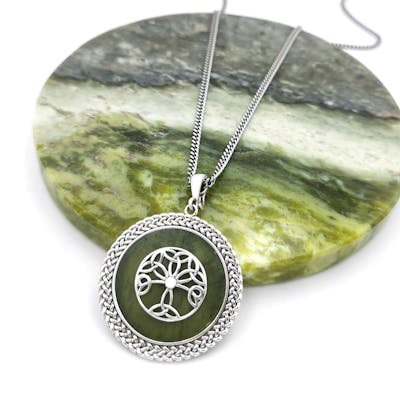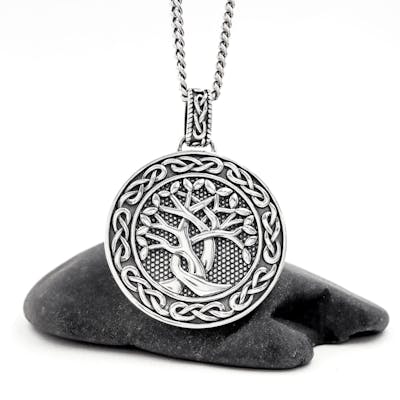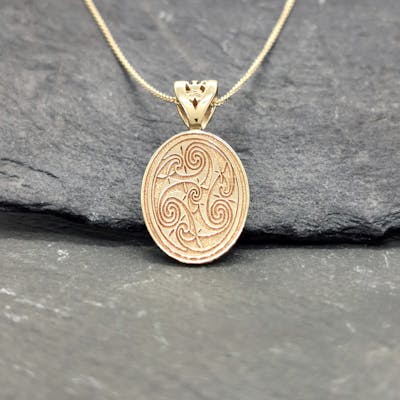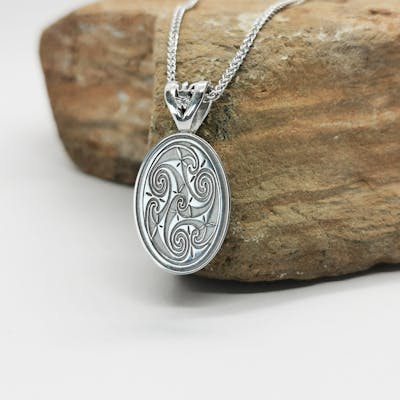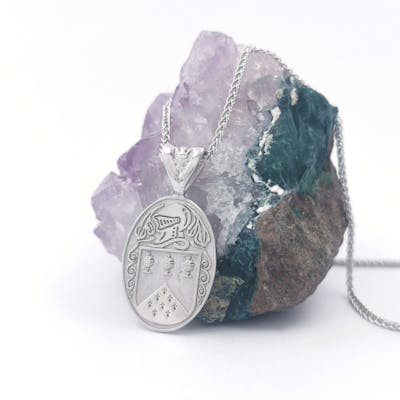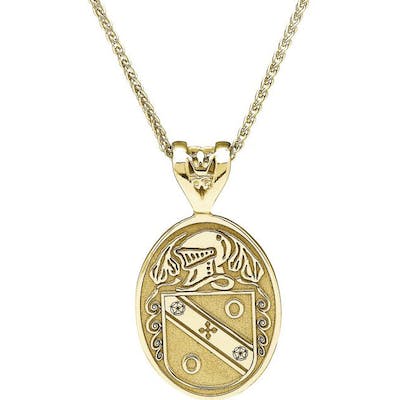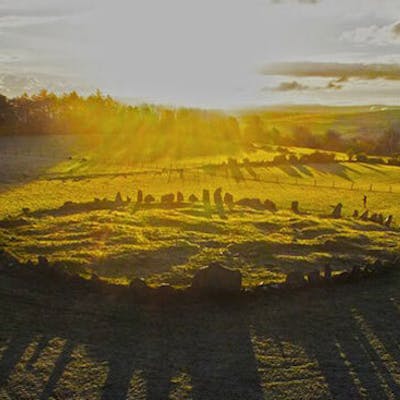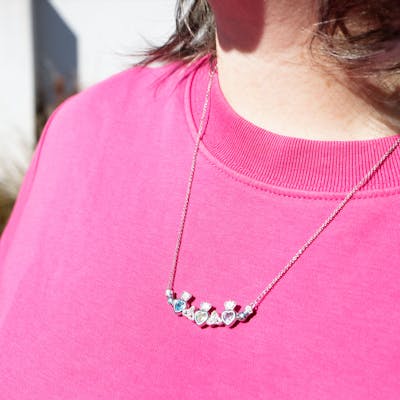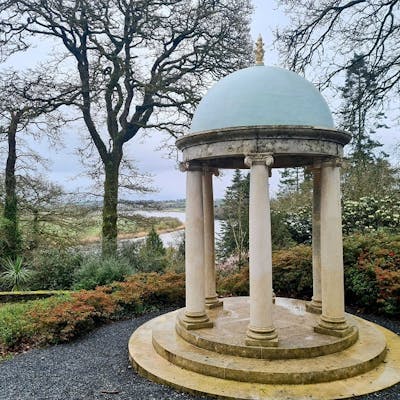
Medals and Medallions: History, types, and how to wear them
Written by Gemma Butler on Aug 08, 2023 | 0 Comments
Inspired by new additions to our popular devotional medals range, we thought we should take a little time to delve into the history, style, and trends of medals and their larger cousins, medallions. Read on to find out more about the history of this timeless jewellery trend, Irish medals, how to wear medallions and medals, and our picks for perfect pieces to add to your own collection.
Not just for the Olympics
Now, the word “medal” might have some thinking of the Olympics, while medallions might bring to mind 1970’s glitz!
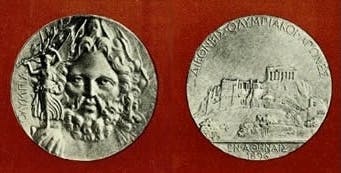
A silver medal, given to the champions in the first modern Olympic Games in 1896. Winners in the ancient olympics had to make do with an olive wreath.
Photo Credit: Public Domain
But medals and medallions have ancient roots in diplomacy and the arts rather than sporting achievement. The preserve of royalty, celebrities and the style set through the centuries, they have grown to become universal jewellery box staples today.
And It is easy to see why medals and medallions have stood the test of time. They can be deeply meaningful, worn and treasured for a lifetime, and then passed on as heirlooms. Worn solo or layered, these lovely pieces can be styled with almost any look.
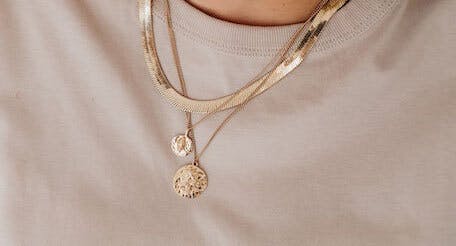
Photo Credit: Karolina Grabowska
What is a medal or medallion?
First things first, what is a medal or medallion exactly? Medals are small, crafted pieces, usually made of a disc of metal that bears an often intricate design. They were typically made to be worn suspended on a piece of jewellery like a chain to form a pendant or on a pin or ribbon.
The term medallion is a little fuzzier, but is generally used to refer to a larger, usually circular medal that is worn on a chain. This can be metal, but it can also incorporate other materials like stone
In some cases medallions are so large that they can’t be worn but are rather framed as works of art. These pieces are often distinguished as “table medallions.”
The history of medals and medallions
You may think these items were first used as recognition of achievement in the military, or in sporting endeavors such as the early Olympics. But it seems medals and medallions were more typically worn as status symbols or given as gifts, by ancient people like the Greeks or Romans. Tokens of friendship or diplomacy that often featured portraits or other personalised features.
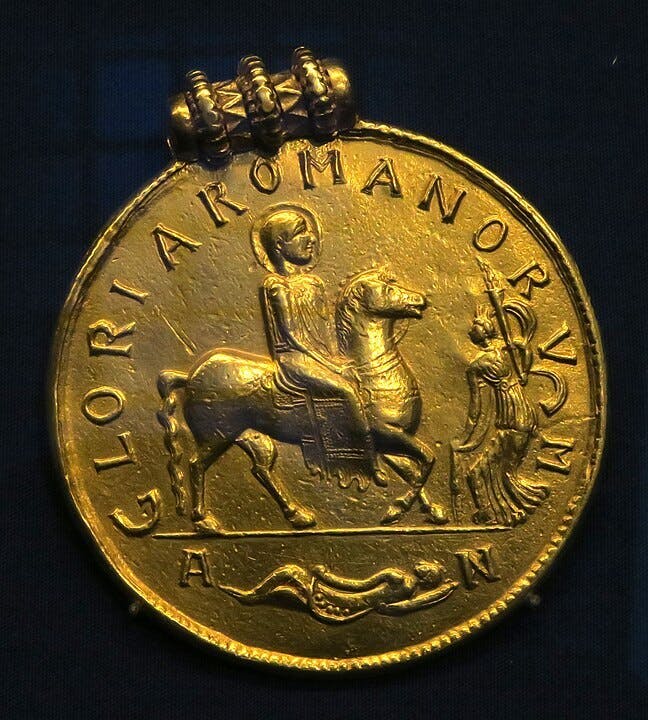
A gold medallion depicting Valens, Roman emperor from 364 to 378, found in a 5th century horde in Romania.
Photo Credit: Burkhard Mücke (CC BY-SA 4.0)
Medals in Ireland
Winners of All-Ireland football, hurling or camogie finals will be presented with a medal inspired by the form of the celtic cross. These medals date back to 1887 and the founding of the All Ireland championships making them a relatively recent phenomenon.
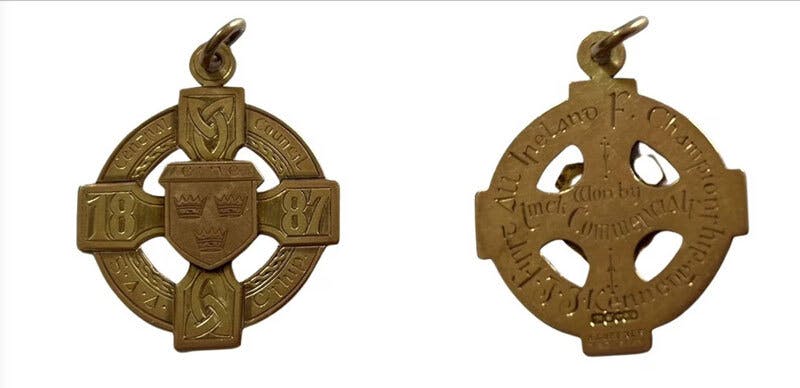
A rare 9K gold medal for the first ever GAA All-Ireland Football Championship held in 1887. It went under auction this year and sold for €32,000!
Photo Credit: Fonsie Mealy's
But there is an older Irish history of masonic, society, and holy or devotional medals in Ireland, dating back centuries. This tradition carries through to today with many Irish people owning one or more holy medals.
Devotional or Holy Medals
Holy medals play a significant role in Irish culture, deeply rooted in our rich history and spiritual traditions. They are often worn as a symbol of faith and devotion, representing the saints and the blessings they bestow upon the wearer. Different saints and devotions are associated with specific medals.
Irish holy medals often depict renowned saints such as Patrick, Brigid, or Christopher - each carrying their own unique significance and patronage.
The intricate designs of these medals showcase the craftsmanship and artistic talent of Irish artisans, reflecting our cultural heritage. And holy medals are often passed down through generations, becoming cherished family heirlooms that connect individuals to their ancestral roots and religious heritage.
The popularity of holy medals now extends beyond religious significance, with many wearing them to make a fashion statement and a way to showcase Irish roots.
How to wear a medal or medallion?
There are no rules really. Male or female, medals and medallions look smart worn on top of crewneck tops, sweaters and turtlenecks as long as the chains can comfortably reach around the neck. They can also be worn against the skin with a lower neckline. How one chooses to wear a medal or medallion really depends on the style of the piece and the look you are going for.
Larger medallions look striking worn solo on a longer chain as a statement piece.
Smaller medals can be worn solo for a subtle accent.
Or try them in tandem with other necklaces, chains or pendants of the same metal for a rich and stylish layered look.
What style of medal or medallion should you wear?
Given that medals and medallions are all about adding the personal touch to your look, we recommend focusing on the meaning behind the style to help you choose.
Devotional or Holy Medal
As we saw, devotional or holy medals are a style with a long history with people choosing which type to wear according to their own taste, or the attributes associated with the design.
St. Christopher Medal
The patron saint of travelers, representing protection and safety, St Christopher is an enduringly popular saint worldwide, and especially in Ireland. With stories of his heroic efforts to help people pass safely through danger, medals with St Christopher's image were often worn by sailors, soldiers, and mariners for protection. Nowadays, they make a thoughtful gift for young people as they make their way into the world, maybe as they start college or university, as this is often when they leave home for the first time.
Oval St Christopher Medal
€495.00
Celtic St Christopher Medal
€395.00
Round St Christopher Medal
€960.00
Miraculous Medals
Said to grant “abundant graces” to those who wear them, these medals gained their lofty name due to the miracles attributed to their formation and wear. Faithful to the original 1830’s design first made by French goldsmith Adrien Vachette, this medal depicts Mary imparting graces. These are wonderful First Communion or Confirmation gifts.
Gold Miraculous Medal
€485.00
Large Miraculous Medal
€815.00
Warrior spirit
Those that are looking to express their inner warrior might be drawn to the Celtic Warrior style. Inspired by the shields of our ancient ancestors, one of these medals or medallions worn solo or in a stack will have you ready to take on any battle.
Celtic Tree of Life
The Celtic Tree of Life is an ancient design that many wear as a symbol of connection and grounding as well as strength, wisdom, family, and health. Found in many cultures, this lovely design has universal appeal and works beautifully when paired with natural stone.
Onyx Tree of Life Pendant
€385.00
Large Connemara Marble Tree Of Life Pendant
€300.00 €225.00
Heirloom Tree of Life Pendant
€405.00
Tri-Spiral
The tri-spiral, or triskele, was first engraved in Irish stone 5000 years ago, long before the arrival of the Celts. With a meaning lost to the mists of time, many wear it today as a symbol of progress, strength, and vitality, with the three arms representing the past, present and future.
Family Heirloom
All of our medals and medallions are crafted in hallmarked Sterling silver or gold, making them perfect for passing down the generations. But one of our family crest pendants makes for a truly unique family heirloom, made for you and your personal story.
Oval Family Crest Pendant in Gold
€1545.00
Have Questions?
Get In Touch
Have a question or something you're not entirely sure about when browsing our pieces? Please reach out. You can send us a note or give us a call—the Dublin workshop is here to make sure that you have a perfect experience from start to finish with My Irish Jeweler.
Follow us on Facebook and Instagram, to see what's new and upcoming. Join our Email list for early offers and special features.

Gemma Butler
My Irish Jeweler
Gemma is our head jeweler. She is very passionate about jewelry and watches. Her favorite style is Tree of Life "because family and roots are so important to me".
Comments



